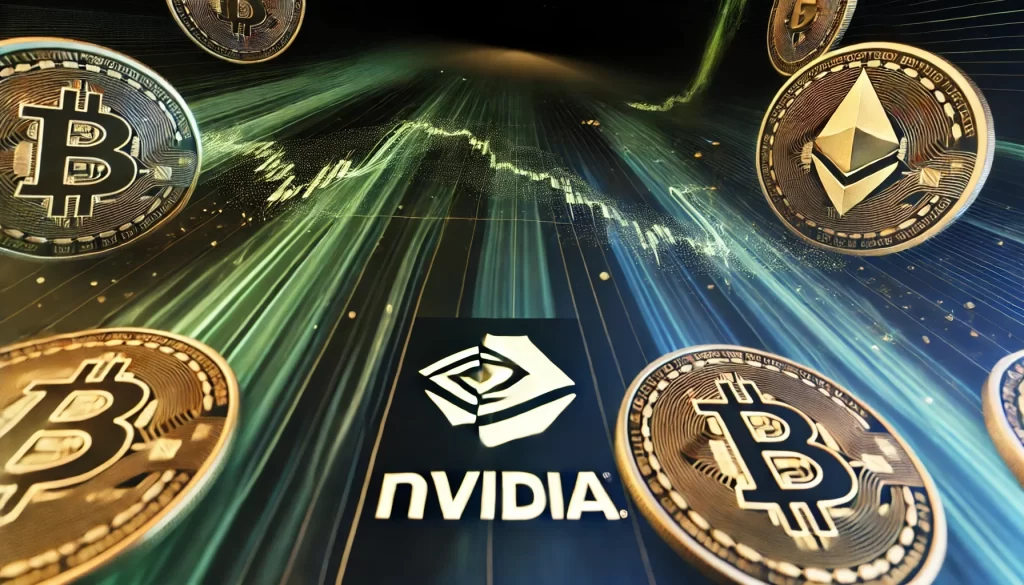
Table of Contents

Introduction: Contrasting the increasing volatility of Nvidia with those of cryptocurrencies
Prominent Nasdaq stock exchange company and artificial intelligence (AI) technology leader Nvidia (NVDA) has lately shown significant price swings. This swings more than that of well-known cryptocurrencies like Ethereum ( ETH) and Bitcoin ( BTC). Data from Fintel indicates that the 30-day options implied volatility of Nvidia has climbed from an annualized rate of 48% to 71%. This implies that major price swings are more expected on the market.
Comparative Analysis: Implied Volatility of Nvidia against Bitcoins
Predicting changes in market prices depends much on implied volatility. Nvidia’s recent increase in this metric points to growing uncertainty about the stock’s future behavior. TradingView reports that Bitcoin’s DVOL index—which measures its 30-day implied volatility—has dropped from 68% to 49%; Ethereum’s matching index has dropped from 70% to 55%. This change suggests a rather more constant projection for these digital currencies than for Nvidia.
The Role of Options in Market Volatility
Options are financial derivatives meant to help traders control possible price swings. The expected degree of price volatility is found in the implied volatility of options, which is set by market demand. The higher implied volatility of Nvidia could be related with a change in the hedging activities done by market players. This behavior, which is rather common in the bitcoin market, emphasizes the parallels between the trading dynamics of equities and cryptocurrencies.
Nvidia and Bitcoin: A Correlated Market Behavior
Particularly following the introduction of ChatGPT in late 2022, Nvidia and Bitcoin have shown a clear and consistent positive relationship in recent months. Based on CoinDesk data, since peaking at $140 last month, Nvidia’s stock price has dropped about 26%. This decline might point to negative trends in the general market as well as in cryptocurrencies. Right now, Bitcoin’s value swings between $60,000 and $70,000 and shows similar trends of volatility.
Market Maker Dynamics and the Impact of Negative Gamma
The idea of negative gamma helps explain Nvidia’s higher volatility since it forces market makers to change their posture to keep a neutral exposure. This event affects indices including SPY and QQQ and is not limited to the bitcoin market; it also clearly shows itself on the American stock market. Leading options trading and research at BloFin, a cryptocurrency financial platform, Griffin Ardern says negative gamma hedging has significantly affected Nvidia’s implied volatility. This influence is even more than that seen in Ethereum (ETH) and Bitcoin (BTC).
Conclusion: Navigating Volatility in Equity and Crypto Markets
Market players should remain vigilant given the higher volatility of Nvidia than of Bitcoin and Ethereum. Future trends will be much influenced by the interaction of elements including hedging activities, market sentiment, and changing dynamics of AI technology investments. Investors should consider these elements while negotiating the erratic ground of both stocks and cryptocurrencies.
Disclaimer
This is just meant to be information; it is not financial or investment advise. Unexpected changes in market conditions mean that before making any financial decisions, one must carefully study and consult a professional.
For further insights, visit our cryptocurrency website
Explore more about [Bitcoin’s price movements and market trends]



Be the first to comment